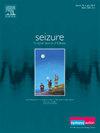Modern neurophysiological techniques indexing normal or abnormal brain aging
IF 2.7
3区 医学
Q2 CLINICAL NEUROLOGY
引用次数: 0
Abstract
Brain aging is associated with a decline in cognitive performance, motor function and sensory perception, even in the absence of neurodegeneration. The underlying pathophysiological mechanisms remain incompletely understood, though alterations in neurogenesis, neuronal senescence and synaptic plasticity are implicated. Recent years have seen advancements in neurophysiological techniques such as electroencephalography (EEG), magnetoencephalography (MEG), event-related potentials (ERP) and transcranial magnetic stimulation (TMS), offering insights into physiological and pathological brain aging. These methods provide real-time information on brain activity, connectivity and network dynamics. Integration of Artificial Intelligence (AI) techniques promise as a tool enhancing the diagnosis and prognosis of age-related cognitive decline. Our review highlights recent advances in these electrophysiological techniques (focusing on EEG, ERP, TMS and TMS–EEG methodologies) and their application in physiological and pathological brain aging. Physiological aging is characterized by changes in EEG spectral power and connectivity, ERP and TMS parameters, indicating alterations in neural activity and network function. Pathological aging, such as in Alzheimer's disease, is associated with further disruptions in EEG rhythms, ERP components and TMS measures, reflecting underlying neurodegenerative processes. Machine learning approaches show promise in classifying cognitive impairment and predicting disease progression. Standardization of neurophysiological methods and integration with other modalities are crucial for a comprehensive understanding of brain aging and neurodegenerative disorders. Advanced network analysis techniques and AI methods hold potential for enhancing diagnostic accuracy and deepening insights into age-related brain changes.
反映大脑正常或异常老化的现代神经生理学技术。
即使没有神经变性,大脑衰老也会导致认知能力、运动功能和感知能力下降。虽然神经发生、神经元衰老和突触可塑性的改变与脑衰老有关,但人们对其潜在的病理生理机制仍然知之甚少。近年来,脑电图(EEG)、脑磁图(MEG)、事件相关电位(ERP)和经颅磁刺激(TMS)等神经生理学技术不断进步,为了解大脑的生理性和病理性衰老提供了线索。这些方法可提供有关大脑活动、连通性和网络动态的实时信息。人工智能(AI)技术的整合有望成为增强与年龄相关的认知衰退的诊断和预后的工具。我们的综述重点介绍了这些电生理技术的最新进展(侧重于脑电图、ERP、TMS 和 TMS-EEG 方法)及其在生理性和病理性脑衰老中的应用。生理性衰老的特点是脑电图频谱功率和连接性、ERP 和 TMS 参数发生变化,表明神经活动和网络功能发生了改变。病理衰老(如阿尔茨海默病)与脑电图节律、ERP 成分和 TMS 测量的进一步破坏有关,反映了潜在的神经退行性过程。机器学习方法在认知障碍分类和预测疾病进展方面大有可为。神经生理学方法的标准化以及与其他模式的整合对于全面了解大脑衰老和神经退行性疾病至关重要。先进的网络分析技术和人工智能方法具有提高诊断准确性和加深对与年龄相关的脑部变化的认识的潜力。
本文章由计算机程序翻译,如有差异,请以英文原文为准。
求助全文
约1分钟内获得全文
求助全文
来源期刊

Seizure-European Journal of Epilepsy
医学-临床神经学
CiteScore
5.60
自引率
6.70%
发文量
231
审稿时长
34 days
期刊介绍:
Seizure - European Journal of Epilepsy is an international journal owned by Epilepsy Action (the largest member led epilepsy organisation in the UK). It provides a forum for papers on all topics related to epilepsy and seizure disorders.
 求助内容:
求助内容: 应助结果提醒方式:
应助结果提醒方式:


